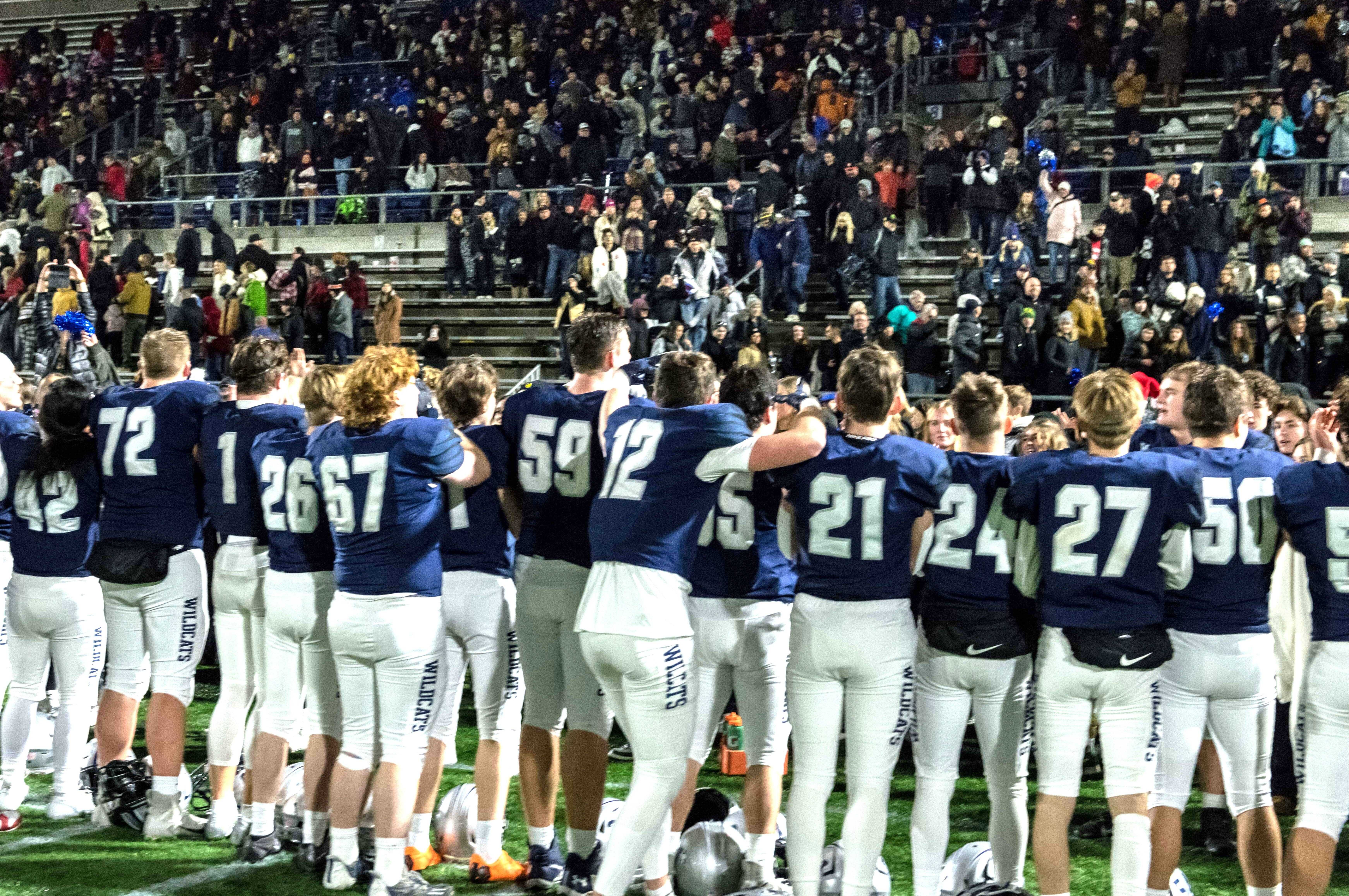
Two of the state's top football programs appear destined to become new league rivals, starting next season.
As part of the OSAA football ad hoc committee's final recommendation to the executive board, released Friday, 5A powers Silverton and Wilsonville will leave their current conferences and be part of a new special district.
If the recommendation is approved at the next executive board meeting Feb. 5, Wilsonville and Canby of the Northwest Oregon Conference will join Silverton, Woodburn, Central and McKay of the Mid-Willamette Conference to create a sixth 5A league. The football-only revisions are for the next two seasons, pending annual review.
Wilsonville won the state championship last season and Silverton took the title in 2021.
“I'm excited. We've kind of got a mini-TRL in the 5A now,” said Wilsonville coach Adam Guenther, referring to the power-packed 6A Three Rivers League. “It's going to be a fun little league. Facing that kind of competition is great.”
Under the new alignment, 5A would go from 32 to 35 teams. Glencoe, Aloha and Roseburg have met the criteria to drop from 6A to 5A. Southridge would leave 5A and return to 6A, and La Salle Prep would jump from 4A to 5A.
Adding three teams created an impetus for a sixth 5A league. The committee opted to split the 10-team Mid-Willamette and the NWOC, which would have swelled to 10 teams with the addition of Aloha and Glencoe.
“When you're dealing with the schools that roll down from the Metro area, it puts pressure on the numbers,” said Guenther, a member of the committee. “Bottom line, it's hard to go with leagues of 10 because it's almost impossible to schedule, unless you split the league.”
Guided by geography, the committee decided to pair Wilsonville and Canby with four teams from the Mid-Willamette. The remaining Mid-Willamette teams would stay together in a six-team league, and Glencoe and Aloha would be part of an eight-team NWOC. La Salle Prep would replace Southridge in the NWOC.
Silverton would have to cut ties with conference rivals such as West Albany and Dallas.
“We already said we hope to do preseason with them, and I think that was reciprocated,” Silverton coach Dan Lever said. “There's a really old Dallas-Silverton rivarly that goes back a long time. You're always sad to lose some of those rivalries, but you've got to embrace the change.
“I'm one of those guys who, just tell me who we've got and what time the bus leaves, when kickoff is, and let's go strap it up and play ball.”
With 10 teams in the conference, Mid-Willamette teams were unable to schedule nonleague games last season.
“It's weird not playing a nonleague game,” Lever said. “What we're probably going to see is more 5A-6A crossovers in those nonleague games, which is good. There's a lot of good 5A football being played.”
Guenther is hopeful to maintain a budding rivalry with Canby and is “cautiously optimistic” about developing a new one with Silverton.
“In two years, it could change again,” he said.
Other takeaways from the committee's recommendation:
- Of the 27 schools that met the criteria to move down one classification, seven opted to do so: Aloha (6A to 5A), Cottage Grove (4A to 3A), Glencoe (6A to 5A), Jefferson (3A to 2A), Klamath Union (4A to 3A), Madras (4A to 3A) and Roseburg (6A to 5A). Teams slated to move up are La Salle Prep (4A to 5A), Southridge (5A to 6A), St. Paul (1A-8 to 2A) and Enterprise (1A-8 to 2A).
- The committee supports reinstating “zero week” games, when jamborees are usually played. It would extend the regular season to 10 weeks, but teams still would be capped at nine contests during that span. It has gained support from the executive board and will be an action item for the delegate assembly April 8.
- Playoff brackets would remain the same as in 2023, with the possible exception of 6A. A 6A school survey revealed support for the Columbia Cup but also for making changes. The committee said that more input and discussion is needed before finalizing a format. A sub-committee will work on potential options and bring a proposal to the May 6 executive board meeting.
- The committee considered changing the 1A-8 cutoff to 50-74, but decided to keep it at 60-74. It is believed that the change would have negatively impacted 1A-6 programs.
- Realignment in 3A and 2A calls for both classifications to go from five to six special districts.










